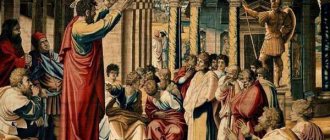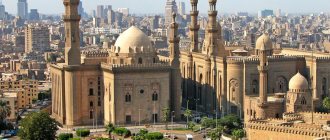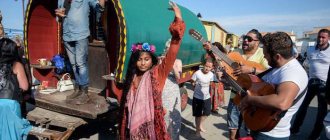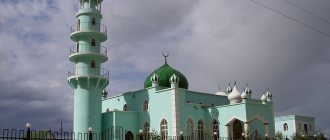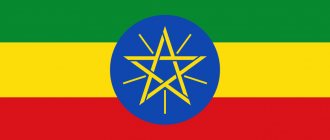Have you ever wondered what kind of faith the Kyrgyz people have? Most likely, unlikely. But imagine how interesting it is to look at a foreign culture. Perhaps the ancestors of the Kyrgyz brought from Altai legends about encounters with yeti?
Or do dozens of generations of this people carefully preserve some unique religious tradition? You never know what you can find out if you delve into another person's world. Let's talk a little about the religious beliefs of the Kyrgyz people.
Women in Kyrgyz national clothes. Photo: static-2.akipress.org
Story
The formation of the people took place in a difficult situation. The most ancient ancestors of the Kyrgyz people are now called the Saks. These were warlike tribes of pastoralists who occupied part of the territory of Central Asia in the 1st millennium BC. They and their successors, the Usuns (Usunis), had to fight the Huns, who at that time were strong warriors with a developed army. With the arrival of the Mongol troops, the people had to continue the struggle, holding the territories of the Tien Shan and Pamir-Altai. The militancy of the tribes affected the Mongols and the army of Genghis Khan, but the new khanates, one after another, continued to raid the Kyrgyz, which forced them to make contact with the Russian Empire. This becomes a turning point in the history of the country. Its northern part joins Russia, and the southern part is conquered. The policies of the Russian tsars lead to mass demonstrations and protests. And in 1916, an uprising breaks out. The Soviet period turned out to be useful for the country. She was able to industrialize and begin to establish production. With the collapse of the USSR, a series of big problems began, but in recent years the situation has begun to improve due to the restoration of statehood.
Life
The status of a person among the Kyrgyz depends on the height of his hat. A white felt hat is called a bakai-kalpak. This cap is decorated with hand embroidery. If a person is from a simple family, then his bakai will be short, and if from a rich family, it will be elongated. The most beautiful embroidery is done by older people. The Kyrgyz still play the game kok-boru, which is reminiscent of polo. True, they play it not with a ball, but with a goat carcass. For hygiene purposes, in recent years they have begun to use a dummy carcass. The game is so popular that people come to Kyrgyzstan for world championships called the World Nomad Games. During them, they play kok-bora, arrange archery, and hold a wrestling competition. In markets, every shop needs to be fumigated with smoke. Juniper is used for the procedure. The Kyrgyz believe that this herb helps drive out evil spirits. The Kyrgyz live in yurts. This home is considered truly unique, and is therefore included in the UNESCO list. Yurts are even built for the deceased. Such housing is called funeral housing. The deceased spends 3 days and 2 nights in it so that every relative can come and say goodbye. The ritual of bride kidnapping - ala kachuu - is still preserved. The authorities are fighting such rituals, although not very successfully: criminal offenses are committed 10-15 thousand times a year. It's amazing that thefts happen for real. An ancient tradition states that a kidnapped girl must marry her kidnapper. Now local authorities are actively promoting the freedom of choice of groom for girls. The Kyrgyz eat, sitting on mats at low tables. Moreover, during the feast, the guest of honor is presented with the tail of a ram, showing respect. If an elder is present at the table, present him with a pelvic bone. The most important guests are presented with the head. According to tradition, the recipient must cut out the eyes, cut them in half and share with another guest who is most attractive to him. Girls are usually given the palate. Children receive the right ear, and the owner of the house keeps the left one, adding it to the collection. Finally, omen is an important basis in the life of every Kyrgyz. This is gratitude to the Almighty, which is said after a meal. This custom came from Islam and is observed by almost everyone; even those Kyrgyz who are not Muslims must say omen by bringing their palms to their heads.
Tribal structure[ | ]
Main article: Kyrgyz clans
“Migration of the Kyrgyz” (1869-1870) - from the Turkestan series by V.V. Vereshchagin “Kyrgyz tents on the Chu River” (1869-1870) - from the Turkestan series by V.V. Vereshchagin “Kyrgyz tents” or yurts. 1914
The tribal structure of the Kyrgyz people includes two tribal unions - Otuz uul
and
He uul.
Tribes are grouped into right (
On kanat
) and left (
Sol kanat
) wings.
According to Chinese written sources, the formation of the tribal structure among the Kirghiz was completed in the first half of the 16th century[47].
The common legendary father of the Kyrgyz according to sanzhyra (from Arabic: شجرة shazhara
) is considered Dolon-biy, who had three sons
Ak uul
(right wing),
Kuu uul
(left wing) and
Kyzyl uul
(Ichkilik group).
The descendants of Ak uul
and
Kuu uul
entered the
Otuz uul tribal union.
The descendants of
Kyzyl uul
formed the union
On uul.
Otuz uul (30 sons)
:
1. Ak uul - On rope:
- Koko and Naaly → Mongoldor
- Adigine → Zhoru, Bargy, Borү, Karabagysh, Paygut, Baaryn, Sarttar
- Tagai → Bugu, Sarybagysh, Solto, Zhediger, Konurat, Sayak, Suumurun, Tynymseit
- Kara Choro → Azyk, Bagysh, Chekir Sayak, Cherik
- Mungush
2. Kuu uul - Sol rope:
- Kushchu, Munduz, Basyz, Saruu, Kytai, Zhetigen, Toboi, Chong Bagysh
He uul (10 sons)
:
3. Kyzyl uul - Ichkilik:
- Kypchak, Kesek, Teyit, Kandy, Boston, Noigut, Naiman, Dolos, Avat, Orgu, Kydyrshaa.
Traditions
The daily life of the Kyrgyz people closely echoes traditions. One of the most important is hospitality. The Kirghiz treat the guest as a blessing. It has long been believed that everyone who entered a settlement should visit at least one house and share a meal with the owners. In rural areas, the custom of hospitality is strictly respected. Among city residents, many do not forget about him either. Therefore, an invitation from a Kyrgyz person to come visit must be answered affirmatively, otherwise it is perceived as bad form. Women must sit at separate tables; guests come with small gifts and sweets for children. The meal begins with tea. Tradition tells us to eat pastries before the appetizer, then move on to salads and only then to the main food. Flatbreads that replace bread should not be turned over. It is better to eat them carefully, because dropping pieces means inviting trouble. The Kyrgyz decide all their affairs in the teahouse. This place serves for business negotiations, joint lunches with business partners, relaxation and planning transactions. It is mandatory to drink tea while staying in the teahouse, observing a number of rituals that the locals keep secret and do not tell tourists about their features. Usually, to conclude important deals, people gather at the teahouse on Monday - the most successful day, according to the Kyrgyz.
Wedding
They prepare for weddings in advance, planning each stage. Usually the sons who are older are the first to marry. The youngest is the last one to start a family. The younger ones must also take care of their parents and stay in their father's house. Previous traditions ordered the husband to present the ransom to the bride's parents. Horses remained the most in demand. Sometimes cattle or money are used as ransom. If the groom was a certified master, he could present a product made with his own hands. The groom was supposed to give his bride a wedding dress and jewelry. Before obtaining the consent of her parents, she had to sit down at a common table, dine and agree on everything. Only after obtaining consent was it possible to hold the wedding ceremony. Wedding suits have still not lost their relevance.
Holidays
Absolutely all holidays in Kyrgyzstan are accompanied by exciting competitions. Descendants of a nomadic lifestyle love to compete in horse racing, archery, and other events with elements of acrobatics. One of the most difficult is tiyn-enmei, which requires great physical strength and dexterity from a person. During the competition, participants must ride a horse as quickly as possible and grab a coin lying in a dug hole.
Achilles
Views: 1,545
Continuation, previous parts here .
Chapter 10. Deacon
Father Valentin could not stand it and burst into tears. The deacon was already getting ready for the evening service when he received a call from Evgeniy Aleksandrovich, his leader, the owner of the taxi “In Samara Povezet”. Father Valentin waited for this call for almost a day, was afraid of it, thought about what he would say in response, selected arguments, but the conversation turned out to be short and knocked out the last hopes from him with a powerful hook.
- Val, this is the edge, you understand. There's nothing you can do, you're fired. Don't be offended, this has been a long time coming.
That's all. Three sentences, but sharper than the guillotine. Whistle, click. Head off shoulders. After these words from Father Deacon, he burst out. He cried, as in distant childhood, sincerely, shaking with sobs, loudly, clasping his knees with his hands, collapsing on the sofa and howling, burying his face in the pillow. The fabric of the cassock had ridden up, exposing her thin, hairy legs in gray socks. Looking at this picture from the outside was both painful and funny. Ridiculous, right? A clergyman becomes despondent, does that really happen? It happens, of course. And it’s good that no one saw this from the outside.
Sometimes, when you worry about something for a long time, you are sad, it is very important to break down and cry like that. After a few minutes, the face turns red, snot begins to flow along with the tears, but my soul, somewhere deep inside, becomes calmer. It seems that the problem is not solved, it seems that nothing happened. But suddenly comfort comes. Father Valentin believed that this was the good heart of Jesus. He, being in Heaven, feels this pain as if it were His personal. Instead of minding his own business, He comes down and strokes the crying man on the head. And with the coming of God it becomes quiet. Calm and cozy. It was as if my mother came, kissed me on the cheek and pulled the blanket up to my chin. Sleep, dear, everything will be fine. Well, of course it won't. But it becomes calmer.
Of course, there are a lot of such crybabies all over the world, and Jesus will not be able to reach them all physically. But no one is left without consolation. If Jesus himself cannot - he calms down some Jose in Mexico City - His deputies come to you. Perhaps the Mother of God herself. Or one of the angels. Maybe one of the saints. It was for this purpose, so Father Deacon thought, that national saints existed. Are they shining in Russia, or in Spain? They are certainly closer to their relatives. Jesus, when He Himself cannot, passes on the task to the Mother of God. She, being practical and, like Christ, very philanthropic, passes on the data further to the Council of World Saints. Led, most likely, by the apostles. Paul, Peter and John. And they, seeing the country and language where the request came from, send some local saint there. Therefore, perhaps it was not Christ who calmed Father Valentine, but Sergius of Radonezh or Varlaam of Khutyn. But does it matter? The main thing is the result. Nine minutes later, the man sat in quiet prostration and contemplated his memories.
It all started the day before, on Friday, August 16th. Father Valentin decided to “bomb” - after the service, take a taxi and earn at least some money. There were no VIP guests, so I went along the usual route. And it had to be on such a day, after the usual everyday service, after consuming the Body and Blood of Christ in the Church, that he rammed the ass of a Chevrolet Orlando. And not just a Chevrolet, but a Chevrolet of some fucking Samara Duma deputy.
“What, you bearded freak, do you think you’re the smartest?” I’ll rip out your swear word, swear word.
Through the word. Father Valentin stood, looked into the wide pupils of his narrow eyes and counted - the mat, like stitches, slipped out after every spoken word. Probably a former military man. From his VIP trips, Father Valentin learned to distinguish between statesmen. From the intelligentsia - a swear word, one in two sentences and on topic, meaningfully. Former Soviet party organizers are in every sentence, but also meaningfully. And only representatives of the Soviet-Russian security forces swore steadily, without meaning and time.
Father Deacon tried not to get involved in the aggressive tirade of a servant of the state. But this seemed to only provoke the servant of the people.
- You, swear word, what do you think, you’ve grown a beard, you nit, so swear word, can you put authoritative people on stream? Swear word to you, swear word. A swear word.
“Let’s call the traffic police,” suggested Father Valentin, trying to somehow stop the flowing stream of slander.
- What the hell with the traffic police? It's been a hundred years since the traffic police, swear word, your head. A swear word. Go call. Just know that I have connections there, swear word. And it will only get worse for you. Throw me a hundred and we go our separate ways.
- Rubles? — the deacon did not think in other categories. Sotochka means one hundred rubles. What else could this phrase mean? But this infuriated the civil servant even more.
- One hundred rubles? A swear word. One hundred, swear word, rubles? Swear word, a hundred, swear word, rubles? Yes, you are a swear word.
And indeed. Instead of the usual traffic police officers, a colonel arrived. And the first thing he did was shake the deputy’s hand. A miracle immediately happened for government officials. It turned out that Valentin’s father smelled of alcohol. He served and consumed the remains of the sacrament, as always. Ordinary guardians of road safety were on the side of the deacon, they turned a blind eye to such a trifle that Holy Communion is wine with fourteen percent alcohol. Communion, what can you do? The most arrogant ones took a thousand rubles, others simply asked to pray for one of their relatives. But in this situation, the status of the deputy exceeded the status of the Holy Communion. The protocol recorded that Father Valentin, no, not that, Valentin Semenovich Bortnikov, was intoxicated. The license was taken right there on the road, the car was taken away by a tow truck, and another taxi was sent for the passenger. Of all those present, he was the most adequate; he sat silently with headphones on in the back seat and waited for how it would all end.
Father Valentin barely remembered how he got home and slept almost the entire next day. The first thing I did when I woke up on Saturday morning was look at my phone. There were no calls. Already before the service he calmed down a little, he even managed to heat up some boiled potatoes, and his appetite appeared. And then Evgeniy Alexandrovich called. Hammering the last nail.
The worst thing in this situation is that instead of some kind of, albeit not very beloved, albeit not very stable, but still future, Father Valentin was faced with a yawning abyss. whose name was written in large letters - Poverty.
The deacon did not end his relationship with this bloodthirsty lady throughout his thirty-seven years. The Bortnikov family was large by Soviet standards. Three children. Valya is the eldest, middle brother Alyosha and younger sister Sveta. Little Valya's parents were left without work in the nineties. Dad, a process engineer, spent his whole life in the chemical industry, which ceased to exist in the nineties and was laid off; my mother, a librarian at a state university, once realized that she was spending more on travel and lunch than she received, and quit herself. They tried to open their own point in the market, which didn’t work, then some local skinheads squeezed it out. The parents then installed a huge iron door, afraid that they would come home to them and seriously talked about moving somewhere to a remote village. Then mom is a salesperson in a store, dad is a security guard in some banquet hall. And poverty. Constant poverty. He remembered well that shoes or clothes were bought only for one of the three children per month. The rest were strictly punished not to vomit. And don't grow up. At least a month. One chocolate was bought for the whole family. Samara chocolate was considered the most delicious; already in those days, Valentin fell in love with Samara. This chocolate bar was divided into five equal slices - six for each. One day my mother shared a chocolate bar in the kitchen and gave Valentina’s share to Sveta to take to her brother’s room. And Sveta, either on purpose or just out of thought, ate half of Valya’s share along the way. Oh, how angry he was then. Chocolate was worth its weight in gold, but here... Already studying at the institute, Valentin bought himself a whole chocolate bar with a scholarship and ate it whole, alone, without even drinking it. It seemed to him that this was the expression of freedom. The opportunity to buy yourself a chocolate bar and eat it.
Although my student years were poor. My parents couldn’t help, I also had to get a job as a watchman and work part-time at night. Valya was stubborn, he did not give up his studies and even built a career at the institute - first with honors, then graduate school, and then even a candidate of technical sciences. And the position of professor. But this position did not bring any money. Valentin was too honest, he really wanted to give students knowledge, he ignited a spark in them and ensured that they passed the exams themselves. While his colleagues managed to acquire brand new cars, and Lev Andreevich, a teacher at Sopromat, even bought an apartment on Kirov Avenue.
And of course, when Valentin came to the Church, he did not become richer. But he calmed down. Suddenly it turned out that Poverty is not scary. Poverty is a blessing. “Blessed are the poor...”, “do not lay up treasures on earth...”, “the love of money is the root of all evil.” And that calmed me down. For some time. Then, when there was no money to simply pay rent, despondency set in again. Well, indeed, the love of money is a sin, no one argues. But what kind of love of money is there? What kind of silver is there? A hundred rubles worth of paper, you don’t need more. And only in the last five years the deacon, working part-time as a taxi driver, began to live normally. Not rich, but at least so that at night instead of sleeping, you don’t have to worry about where to get money from. So, to buy shoes without thinking about how to live after that for another two weeks until salary.
Poverty is the main spiritual bond of Russia. Father Valentin felt this especially keenly when in the back seat of his taxi sat billionaires in suits that cost more than the deacon’s annual income. In Russia it has been this way since time immemorial - two percent of the richest people in the world and ninety-eight percent of the poor. And one cannot exist without the other, and Russia’s balance rests on both. The maximum that a Russian slave can do out of those ninety-eight is to achieve two percent. So it was in the seventeenth, so it was in the ninety-third. It has always been this way, and it will always be so. This is a spiritual bond - the balance will change, and Russia, such as it is now, will cease to exist. Therefore, the balance is not disturbed. Made it into the first two percent? Please, kick someone out of there. Otherwise stability will collapse. It has been this way since the beginning of the country’s existence, and it will be so until its complete destruction. Whatever you call it - the Russian Empire, the USSR or the Russian Federation. Moreover, no matter how strange it may sound, the balance was maintained not only from above - let's be honest, could two percent keep their wealth if at least twenty percent wanted to take this wealth away? Of course not. The way of life has always been supported by the poor. They are the ones who are sure that it cannot be any other way. They are the ones who drown those who are trying to somehow change the situation. There, behind him, in his BMW, sits the Master. With a capital letter. And no matter how much he earns, no matter how he lives, he is a slave. Born a slave and will die a slave. And so God commanded. Amen.
Valentin did not argue with this balance, he was not against it, who was he to argue with centuries-old traditions? But he saw and understood that all these governors and heads of construction companies were two percent out of the dirt. How? Interesting question. A question that would allow him to escape too. But it was impossible to ask this question directly; it would mean complete failure. Will the one who just received them give away his treasures? Hold your pocket wider. So instead of just asking, Father Deacon tried to discover this secret on his own for nine years of driving. I tried to understand, grope, pry. But I still didn’t understand anything. It seemed that their status was a Miracle. It’s just that God favors them, but the rest of the ninety-eight don’t.
Of course, this is not the answer, Father Valentin understood this. And he did not stop his search. Until the last accident. Before this dishonorable dismissal. He cried not so much because he was left without additional income - although that is also why - but because he lost the opportunity to get to the bottom of the Truth. Because I lost my contact with the bohemian world, a world that is hidden from everyone behind a pink, sugary screen. But he, a mere mortal, managed to open this screen. Let him be in the role of a servant. But he opened it slightly. I tried to find out the secret of popularity. I didn’t find out. He returned here, to the bottom, returned to the unloved, but dear woman, whose name is Poverty.
Thoughts of suicide arose constantly. This is probably also one of the ways to maintain balance. Do you want to get into that two percent, but there’s no room there? Here's some rope and soap, don't fool people. Having become a deacon, Valentin learned to cut off these thoughts. But they returned in various obsessive forms. Again and again. Then suddenly, at a speed of eighty kilometers per hour, I wanted to sharply turn the steering wheel and fly under the wheels of a KAMAZ, then suddenly, standing at the window, I wanted to climb onto the windowsill and take a step into the void. Suicide was not such a bad option, it seemed to Valentin. Father Valentin looked at the world with different eyes and argued with this statement. For nine years he struggled not so much with the outside world or poverty, but with himself and the desire to die. And the struggle bore fruit. Instead of giving in to despondency, Father Valentin got up, combed his hair, washed his face, finished his cold potatoes and went to the evening service. Whatever happens, it’s God’s will.
To be continued
Illustration: painting by Vasily Shulzhenko
If you like our work, support us:
Sberbank card : 4276 1600 2495 4340 (Pluzhnikov Alexey Yurievich)
Or using this form, entering any amount:
Food
The diet of the Kyrgyz is still close to that of their nomadic descendants. When preparing dishes, spices are constantly used, meat is steamed or boiled, horse meat is considered the most popular. Kyrgyz people love flour dishes; soups are made thick, similar to porridge. The most commonly consumed vegetables are radishes and turnips; legumes are often added to food. On the Kyrgyz table, in addition to horse meat, there may be lamb and beef. The most popular dishes are pilaf, manti, soups and various varieties of boiled meat. If you ever decide to visit Kyrgyzstan, be sure to try shorpo - onion soup with herbs and fresh new potatoes. Meat eaters will love kuurma-shorpo - everything is the same, but fried meat and vegetables are added to the dish. The most satisfying broth is beshbarmak. It combines noodles, lamb, herbs and onions. Kyrgyz food is fatty, so those on a diet are better off not eating too much. Nomads always needed high-calorie food, so they made sausages from lamb or horse meat, and the most satisfying dish, ashlyamfu, is made from jellied meat, omelet and noodles, and the Kyrgyz can eat it with goshan - a small cheburek with minced meat and various sauces. Traditional Kyrgyz cuisine has some features:
- Rice is the main side dish;
- Greens and vegetables must be served with fatty foods, which promotes better digestion;
- Most salads are main courses;
- Cheese is rarely found on the table; it is made only by mountain dwellers;
- As for drinks, the Kyrgyz drink a mixture of bozo, which is prepared from fermented millet;
- Cottage cheese here is served salted, and soups are made based on barley;
- Nan flatbread is highly sought after and is prepared in a variety of ways. There are a hundred or two options in total - it all depends on the area. For example, in one they bake bread in a tandoor, in some places they use coals, and sometimes they use butter (this flatbread is called boorsok);
- The most commonly eaten sweets are sherbet, chak-chak, halva and baklava;
- Like other nomads, kumiss is considered an important drink here.
[edit] Pamir Kirghiz
Pamir Kirghiz are a group of Kirghiz from the Ichkilik
, who inhabited the relatively isolated high-mountain regions of the Eastern Pamirs from the 17th to the 18th centuries[33]. Genetically, they are closer to their Siberian ancestors than the Kyrgyz of the Tien Shan[34]. In 1892, the number of Kyrgyz in the Pamirs, which became part of the Russian Empire, amounted to 10,000 people. The establishment of Soviet power in the Pamirs in the 1920s. forced some nomads to move south into neighboring Afghanistan. In 2010, only 60,715 Kyrgyz lived in Tajikistan[35]. Currently, about 1,100 Kyrgyz live in Afghanistan[36].
Unlike the peoples of the Western Pamirs, the Kyrgyz are exclusively engaged in animal husbandry, raising yaks, sheep, and rarely horses, camels and donkeys. Hunting plays an important role. The local way of life, adapted to the harsh conditions of the desert mountain valleys, is best preserved among the Pamir Kirghiz of Afghanistan. In winter they build thick-walled dugouts in the warm southern part of the valley; in summer they move with their animals to the north, where they live in temporary yurts. They trade with their neighbors in Afghanistan, Pakistan and Tajikistan. The unit of exchange is usually sheep. In the second half of the 20th century, trade with Soviet and Russian border guards was important for the Pamir Kyrgyz from Afghanistan. The local cuisine lacks many dishes typical of Kyrgyzstan. Boiled rice, unleavened rye bread, cream, hard kurut
, and sometimes meat, are considered common food. In the Tajik Pamirs, permanent settlements with houses made of stone and clay are common, and the roofs are made flat due to the low rainfall. Livestock is seasonal, and shepherds live in yurts and temporary stone huts.
Culture
The culture of Kyrgyzstan was formed under the influence of Russian, Turkish and Persian peoples. The Kyrgyz consider nature to be the most important thing for them, which is clearly visible in their creativity. Literary works are dedicated to her, music is written, and reflected in ornaments on clothes. The most grandiose is “Manas” - a poem distinguished by an incredibly large number of lines. In the legends of the Kyrgyz people, there was a place for love, war and horses - the most significant animals for nomadic people. The horse can be used for payment, it can be presented as a gift, and it must also be present at the wedding ceremony. The importance of horses is so great that many craftsmen make musical instruments that are needed specifically for playing while traveling on horseback. In their musical works, bards glorify the nomadic way of life, telling stories about everyday life, joys and bad weather. The variety of musical instruments in the country is great.
- The most popular remains the komuz, a small three-string guitar.
- Kyyak is a wooden instrument similar to a violin. The shape resembles a ladle, and its lower part is covered with camel skin.
- Chor is a wind instrument made from clay. Gives birth to deep and nasal sounds.
Textiles occupy a special place. Carpets and clothes that are sewn in Kyrgyzstan have gained popularity all over the world. The products are made from felt and wool and reflect natural landscapes, plant patterns and mountains. A huge number of elements can be depicted on carpets (shirdaks). The more there are, the more expensive the carpet. Traditionally, embroidery depicts mountain goats, birds, and dogs.
Folklore
“Manas” is considered the main work of folklore. It clearly demonstrates the peculiarities of the life of the people for 3 thousand years. The genre belongs to the heroic epic and includes a lot of heroes and events. “Manas” describes in detail the military battles that took place during the raids of neighboring tribes, the struggle for independence and the reconquest of occupied territories. The epic presents the heroes as courageous and purposeful. They are all glorious and valiant warriors. “Manas” pays attention to the woman, showing her not only as a keeper of the hearth, but also as a faithful comrade-in-arms who saves soldiers from death when they receive dangerous wounds. The woman often becomes a mentor, giving valuable advice to the hero. “Manas” has been translated into many languages and has 35 versions, characterized by different presentations. The epic is truly huge - it has more than a million lines.
[edit] Material culture
[edit] Economy
The main occupation of the Kirghiz for a long time remained nomadic cattle. They kept mainly horses, turkey meat, short cows, Bactrian camels, and in the Pamirs - yaks. Each tribe and clan wandered in its designated area in a vertical direction from low-mountain valleys to high-mountain pastures of jailoa
and back.
kygitoa
close to habitation and distant
ator
. The latter grazed most of the livestock. On Kygitoa, only cows and the necessary horses were grazed. Rich Kyrgyz hired special shepherds in the winter. The remaining family farms were forced to join forces. Sheep and cows were kept on the southern slopes of the mountains, unoccupied by snow, and on the northern slopes, horses were kept, which could get grass from under the snowdrifts. Animals were allowed to graze in order. First they grazed horses, then cows, and then sheep. In the spring, the herds were driven to low places, in the summer - to jailoa, in the fall - to separate autumn pastures. The length of nomadic routes in different areas varied: from several dozen to 100–120 km, and in some places reached 150–200 km[10]. Since the 19th century, the classic nomadic economy began to be replaced by a sweatshop economy[11]. Today in Kyrgyzstan, up to 700,000 people are engaged in epaulette[12].
Agriculture was known to the Kyrgyz people from the 17th-18th centuries[13]. Mostly cereals were sown, which were observed in the warm season. In the south, rice, cotton, vegetables, etc. were grown. In the Fergana Valley region there were quite complex irrigation structures. For a long time, agriculture remained auxiliary in nature. After the annexation of the Kyrgyz lands to Russia, the tsarist government helped expand settlements, but sought to preserve outdated forms of land use[14]. At the beginning of the twentieth century, only 15.1% of the population lived in the Bishkek area[15]. However, during Soviet times, agriculture began to play a decisive role in the development of agriculture. There were also beekeeping, poultry farming, fruit growing, and sericulture.
The rich nature allowed the Kyrgyz to hunt. In the Kyrgyz folk calendar, five months are named after game animals. They hunted with birds of prey and weapons, and set iron traps and traps. Collective raids on mountain sheep and goats were organized. Foxes, wolves and roe deer were hunted with the help of trained golden eagles and dogs[16]. Fishing arose late under the influence of Russian settlers[17]. Currently, fishing is of great importance for the inhabitants of Lake Issyk-Kul.
Traditional crafts are associated, first of all, with supporting the economy and are represented by the processing of wool, wood, metals, tailoring, etc.
[edit] Housing
For a long time, the main type of Kyrgyz settlement was ail
, consisting of portable
yurts
. Kyrgyz villages were large, up to 200 dwellings. The members of each nomadic settlement were usually related through the male line. Animals and yurts belonged to individual families, but the lands on which the herds grazed and the nomads remained were considered common. Yurts remained the main home of even settled Kyrgyz almost until the middle of the 20th century. They can be seen on both sides of the road in Kyrgyzstan today.
The yurt consists of wooden lattice walls kerege
, which are placed in a circle, wooden pillars
uuk
, reinforced on top with a
tunduk
with
chegir
.
The rim is supported by cormorant pillars. A double door or mat hangs from a special entrance frame. The walls were covered with felt rugs, then tied together with turban bao
and
kyrchao
[18].
Other common types of housing were huts, small yurts, sheds, covered pens, and, from the late 19th century, brick buildings on foundations, etc.
[edit] Clothes
Kyrgyz national costumes remain adaptable to the nomadic lifestyle and horse riding. They are long, wide, with fragrant floors, covered at the waist with a woven or leather belt. Previously, clothes were made from thin felt and woolen fabrics. Traditional women's clothing - Kaino
, cheerful
beldemchi
elechek
headdress
shakulo
hats and
cap-takiya
, soft leather boots with light soles
ichig
or
maas
.
Traditional men's clothing includes leather or suede trousers chalbar
,
kandagai
,
zhargak shim
, felt robe
kementai
, fur
ichik
, headdress
tebetey
,
kalpak
,
malakai
, ankle boots
chakoy
and
charyk
,
paychek
made of untanned leather[19].
[edit] Kitchen
Dairy and meat dishes were typical of the diet of Kyrgyz nomads. Meat is usually cooked without spices. Horsemeat is still used primarily as a ritual food, and is used to make sausages with Chukchi fat. Ancient dish - beshbarmak
- boiled lamb with broth and noodles.
Milk was boiled or sour, added to other foods, and made into dry cottage cheese. Among the products of plant origin, millet, barley, and wheat predominated. Millet, which has been grown for a long time, was used to prepare porridge, grout, and crushed talc. The flour was used to make fried pieces of baarsok
.
Since the second half of the 19th century, dishes borrowed from neighboring peoples appeared in Kyrgyz cuisine - pilaf, lagman, Sharpo soup, manti dumplings, shish kebab, various salads, etc. The development of agriculture and beekeeping contributed to the enrichment of culinary traditions with dishes from fruits and vegetables, potatoes, eggs, honey, poultry, and to a lesser extent fish. Pumpkins are especially popular in the south of Kyrgyzstan. Currently, various cooking methods are used. Despite significant changes, nowadays it is common to eat hearty meat dishes in the evening.
The most popular drink is tea, which is drunk several times a day with snacks, milk and cream. baso is made from millet
, from milk - kumys, from spices -
bal
[20][21]. Vodka is the most commonly used alcoholic drink.
[edit] Social organization
Until the 19th century, the Kirghiz formed a very complex social and tribal organization. They were divided into three significant groups of tribal associations: atuz-uul
,
Kanurat
and
Ichkilik
[22], which differed in origin. Within them, tribal branches and individual tribes were distinguished. The latter were divided into genera. Each association, branch of the tribe and clan had its own social status, often differing by place of residence or profession. Currently, this division has little impact on everyday life, but continues to have a significant impact on the political and economic system[23][24][25].
The basic small social unit was the small nuclear family of fathers, mothers, children, and sometimes elderly parents. Polygyny was practiced in wealthy families. There were various forms of matchmaking and marriage contracts, including the marriage of newborns, the marriage of a widow to her late husband's younger brother and the marriage of a widower to her late wife's younger sister, the exchange of sisters or relatives without payment, but most often it was preceded by a contract whereby the parents brides received ransom from the groom. Preference was given to marriages with maternal relatives, including marriages of sisters' children and even marriages with the mother's sister. The wife's brother played a significant role in raising the children. The bride came to her husband's family with a dowry[26]. The head of the Kyrgyz family is the father. Property in the past was passed down only through the male line. Currently, the law guarantees equal rights to heirs regardless of gender.
Certain customs—hospitality, gifts, and mutual assistance—were of particular social importance among nomads[27]. Guests were always welcomed by the owner near the yurt and were offered the best food and accommodation. The glory of the host's hospitality raised his status in the eyes of others. Belek gift custom
connected different categories of the population. They gave animals, game, horse armor, musical instruments, jewelry and other valuables. Mandatory mutual assistance was provided primarily by close relatives and family members.
[edit] Folklore
Kyrgyz oral folklore includes a large number of myths, legends, fairy tales, the world's largest epic "Manas", and several small epics. The profession of monk storytellers stands out. In addition, in the past, the art of folk poets akyns, who were divided into improvisers and writers, was popular. They composed long songs. Folk music has a diatonic basis. Common musical instruments are the kamuz harp
,
chaor
kayak
bowed instrument , etc.
Appearance
Physiognomists classify the faces of the Kyrgyz people as Mongoloid. Facial features correspond to Kazakh ones. The Chinese appearance can also be traced, which is associated with the regular invasion of Chinese troops, who drove people into Manchuria.
Cloth
The Kirghiz sew clothes from felt, leather and wool. National costumes are worn on holidays, but in everyday life they prefer simple European clothes. However, on the streets you can see many young people wearing caps. Boys over 6 years old are very proud of this headdress. Men used to often wear a chapan - a beautifully embroidered coat with a stand-up collar. Another type of coat is the checkpen. It is characterized by specific embroidery and is quite long by the standards of European fashion. Women wear skirts with slits. Kyrgyz women wear them over a robe (dress). For special occasions, special dresses are selected - with patterns and embroidery on the sleeves. The headdress is a cone-shaped cap decorated with feathers. An alternative to such a cap is an elechek, similar to a turban. It is wrapped around the head many times - the length of the fabric can reach 30 meters. The men's headdress is the skullcap, which may differ depending on the area of residence. A special feature of the outfits of unmarried girls is the brightness and variety of colors. Married women dress more conservatively.
Housing
Traditional nomadic dwellings - yurts - are still common throughout the country. The basis of the frame of such housing is made up of lattice-type poles and walls. The finishing is done using mats and felt, the floor is covered with leather, and carpets are used as internal insulation. Kyrgyz people store things and clothes in small chests. Men and women are kept separate. The yurt is heated by a kolomto - a small hearth, which is also the main source of light. Additionally, a chirak lamp is used. Colors and patterns are always different among tribal groups and families. Status owners try to decorate the yurt as richly as possible. The most honorable place in the yurt is the tor, placed next to the bench and chests, which are covered with carpets. The owner of the yurt or elder is located on the torus. The richest Kyrgyz have a large number of yurts. Some are used as storage rooms, others are for guests, and others are used for weddings. Mud houses, which replaced yurts during the formation of a sedentary lifestyle, are now not so popular. Most often, people live in apartment buildings. The yurt is more of a whim and an indicator of status.
Character
The Kyrgyz people respect family hierarchy. The father is considered the head of the family, and his word is law for the children. Strictness, as in the old days, is no longer characteristic of parents. Mutual assistance is still elevated to a cult. Relatives, neighbors, acquaintances - everyone is obliged to help each other in difficult times. It is believed that Kyrgyz girls mature at an early age. There are often cases when a young girl, barely 17 years old, is already getting married. Children are considered the highest good; family values are laid down from childhood. Children are taught to work early and are always introduced to the elders, who have not yet lost their authority. Respect for elders is, in principle, one of the main character traits. The Kyrgyz believe that an elderly person teaches the most important thing - wisdom. Therefore, you need to listen to him and heed his words.
Family and marriage[ | ]
The traditional family is patriarchal in nature. If there are several sons in a family, then the youngest son, after getting married, remains with his parents in the parental house, and the parental house goes to him by inheritance. According to tradition, every Kyrgyz must know the names of their grandfathers and great-grandfathers in the male line up to the seventh generation - “zheti ata” (seven fathers). When a daughter gets married, she practically becomes a member of her husband’s family. Her children will belong to her husband's family. Immediately before the wedding, the bride’s family arranges a toy (feast) “kyz uzatuu” - “seeing off the daughter.”
The practice of “bride kidnapping”, which contradicts criminal legislation and social foundations, has received mixed reviews in Kyrgyz society. The forced abduction of a bride began to be perceived as a tradition only in the 20th century[41]. According to the UN, 13.8% of Kyrgyz women under the age of 24 were married against their will[42][43].
Previously, according to custom, there were early forms of matchmaking - “kudalashuu”, matchmaking of unborn children - “bel kuda”, and babies - “beshik kuda”. In the first case, the future wedding of unborn children was agreed upon by devoted friends [44]. As a rule, in the future the children of these friends call them “ayash ata or apa”[45][46].
Religion
Kyrgyzstan is recognized as a secular state, but Islam is predominantly widespread. The majority of religious residents are Sunni Muslims. Only a few here practice Buddhism. Among the religious population there are representatives of Judaism, Lutheranism, Catholicism and Orthodoxy. The country has freedom of religion, which is respected by the state and population. Over the past few years, interest in religion has been increasing. There has been an increase in the construction of mosques and Orthodox churches. There are approximately 1,340 mosques in the country. Among educational institutions, the most common are Christian and Muslim.
The most widespread religion in Kyrgyzstan is Islam.
But the times of shamans are a thing of the past. Now in Kyrgyzstan there are over 82% Muslims.
Representatives of Islam have achieved this in more than one century, starting from X. They correctly calculated that the most effective way is to attract rulers and aristocracy to their religion.
82%
there are so many Muslims in Kyrgyzstan
The invasion of the Mongol-Tatars somewhat slowed down the spread of Islam, but it continued to gradually absorb the ancestors of the Kirghiz. Even the Soviet government could not stop this process, although it caused significant damage.
Central mosque in Bishkek. Photo: informburo.kz
By the end of the 20th century, Kyrgyzstan had over 1000 mosques, and by the 1910s this number approached 2000.
Islam has penetrated into education, public associations and other structures. Even Kyrgyz who travel abroad try to maintain contact with the Muslim world.
2000
so many mosques in Kyrgyzstan today
Of course, this does not mean that every Kyrgyz is a devout Muslim. As in Orthodoxy, there are plenty of “nominal” believers who know nothing about theology and those who treat religion as a formal observance of rituals.
The position of Islam was greatly strengthened by the law “On Freedom of Religion and Religious Organizations in the Kyrgyz Republic.” He limited the opportunities for missionaries, and allowed registration when the number of church members reached 200 people. By the standards of such a small and largely Islamized country, these are harsh conditions.
Lifespan
Life expectancy in the country is one of the pressing problems that are constantly discussed among the people and at the state level. As of 2010, life expectancy among men did not exceed 60 years. At the same time, women, according to the Ministry of Health, reached the age of 72 years. Doctors cite frequent consumption of fatty meat as one of the reasons for low life expectancy among the male population. Now the country's Ministry of Health is looking for a solution to the problem. The government expects that the country's life expectancy should soon increase to 66 years for men and 74 years for women.
There is a small percentage of other religions: Jews, Buddhists, Baha'is
Representatives of other religious traditions in Kyrgyzstan are an insignificant percentage. Jews. They are represented by a small community of about five thousand people. Buddhism. There are two schools of Buddhism practiced in Kyrgyzstan:
- Nipponzan Myohoji;
- Karma Kagyu.
Monk Alexey Shmyglya at the entrance to the Chamsen Buddhist community.
Photo: data.kaktus.media Buddhism does not engage in missionary activities and does not campaign, so the number of its representatives does not increase. It is noteworthy that Kyrgyzstan is a land full of Buddhist relics, temples and statues.
Baha'i. A religion that arose on the basis of Islam in the 19th century. In many ways it is close to him. Strict monotheism, an attempt to discern a single line in all religious traditions. The question of whether it should be considered an independent movement or classified as a Muslim sect is open in modern religious studies.
Number
Today, over 6 million people live in Kyrgyzstan. The specificity of the country's population is such that the male and female population are distributed approximately equally. In recent years there has been a growing trend. Including due to immigrants. There is also an annual outflow of the indigenous population to other countries. The number of people leaving the country currently exceeds the influx. In Kyrgyzstan, high social strain has been recorded: there is a large number of people belonging to the disabled category.
The Kirghiz deserve great respect - in difficult times they had to face the Mongols and Chinese, who outnumbered them and had much more powerful armies. The people of Kyrgyzstan managed not only to survive, but to preserve culture, customs and national identity. Many people are optimistic about the future. Nowadays, the country is increasingly witnessing the growth of the intelligentsia, and the level of literacy and education is growing.
